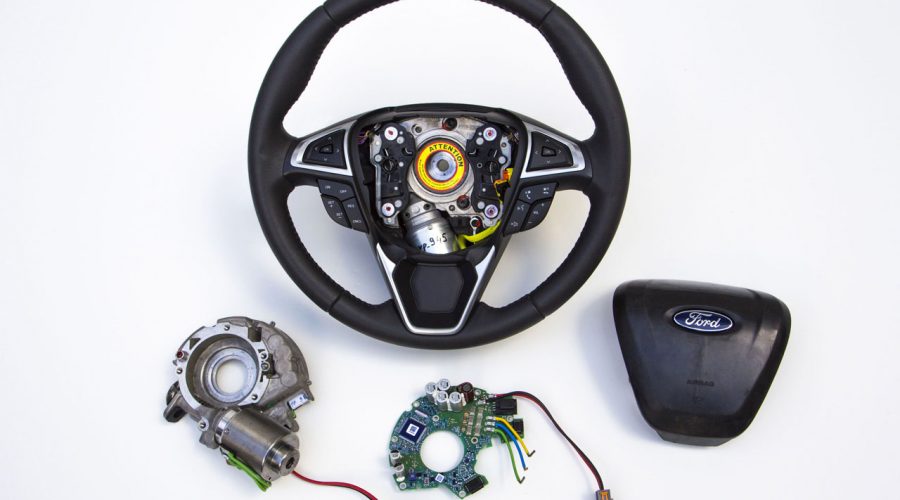Until now, adaptive steering is a technology that’s been restricted to luxury performance vehicles from premium brands such
 |
| Photo: Ford |
as Audi, BMW and Infiniti, but Ford is about to change this with a newly developed adaptive steering system that can be fitted to any vehicle in the company’s lineup.
The advantage of adaptive steering is that it can make driving easier and more engaging. Ford’s system, for instance, reduces both the steering effort required and the number of turns needed for lock-to-lock steering when the vehicle is moving at low speeds. This makes parking much easier.
At medium speeds the system firms up the steering effort and provides good on-centre tracking, while still reducing the number of turns needed to make substantial changes of direction. In demonstration slalom runs, a Ford Fusion with adaptive steering required far less movement of the steering wheel to successfully negotiate
 |
| Photo: Ford |
the slalom course than the same car without adaptive steering.
At higher speeds, Ford’s adaptive steering system is claimed to provide smoother, more precise response and better tracking than a car without adaptive steering, contributing to more relaxed and enjoyable highway driving. The system will also let the driver choose between Sport and Normal modes.
The innovation behind Ford’s new system is that it integrates all of the adaptive steering components into the steering wheel instead of embedding them into the car’s steering system like Audi and BMW do, or relying on a completely fly-by-wire steering system like Infiniti. This means Ford’s system can be produced at less cost, and fitted as an option to any
 |
| Photo: Simon Hill, Canadian Auto Press |
vehicle in the maker’s lineup without requiring any modifications to the vehicle itself.
The system, which was developed in collaboration with leading automotive steering system supplier Takata, uses a precision-controlled actuator consisting of an electric motor and gearing system. The actuator is fitted inside the steering wheel and can add to or subtract from a driver’s steering inputs, acting on top of the vehicle’s traditional steering system – whether electrically or hydraulically assisted – without requiring changes to the steering system. The result, Ford claims, is a better driving experience at all speeds, regardless of vehicle size or class.
Ford’s Adaptive Steering will be available on select vehicles beginning next year, although at press time there was no word on pricing or packaging of the innovative new technology.
©(Copyright Canadian Auto Press)







